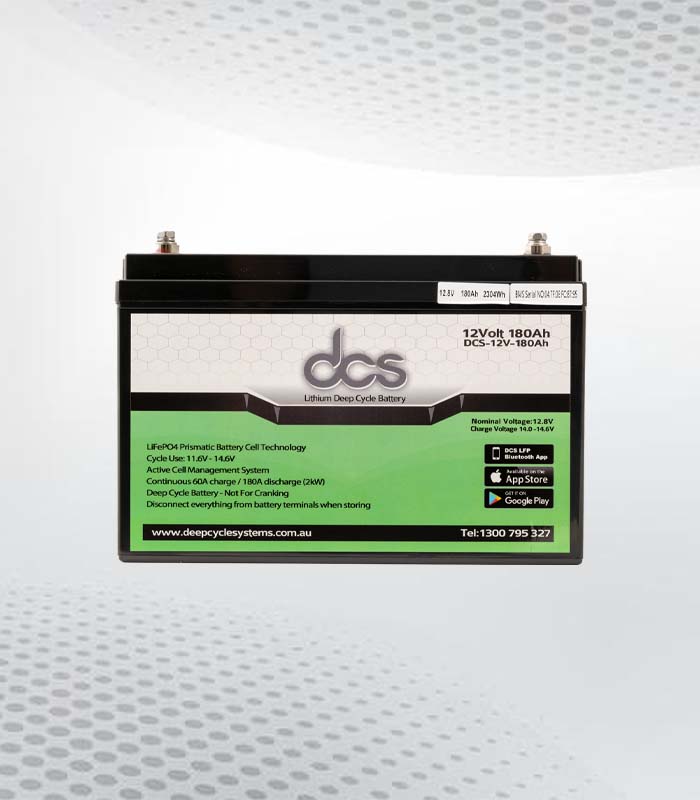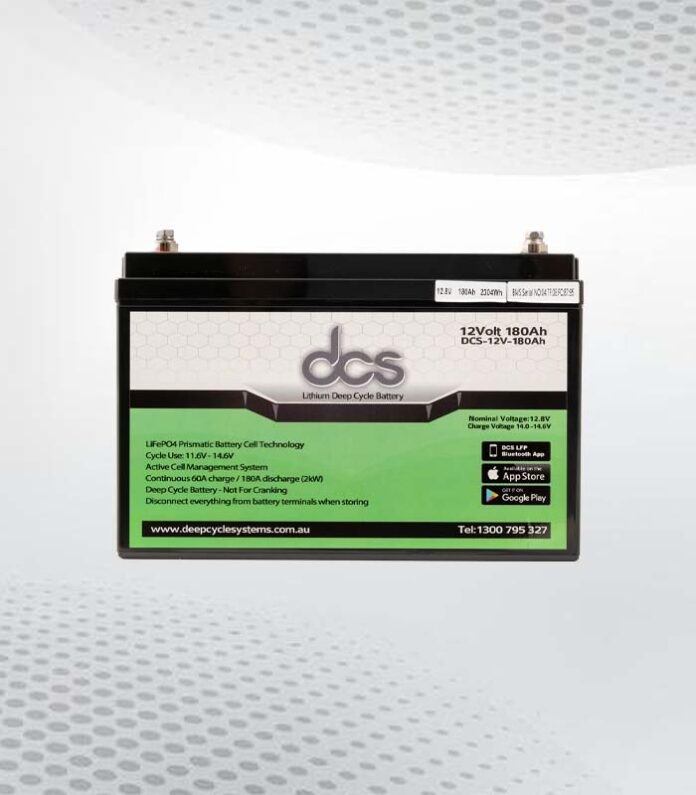Today’s technology is helping to revolutionize the way we power our lives. The future of energy is bright, from electric cars to renewable energy sources. But what about the technology powering these innovations? Deep cycle battery lithium is at the forefront of this revolution, providing reliable and efficient power storage solutions for various applications. This blog post explore the basics of deep-cycle batteries and how they work. We’ll also discuss the cutting-edge technology behind lithium deep-cycle batteries and why they are becoming increasingly popular. So get ready to learn about the amazing power of deep-cycle batteries!
What are deep-cycle batteries?
Deep cycle batteries are rechargeable batteries specifically designed for deep discharging and recharging cycles. Unlike regular batteries, which are used for short bursts of energy and then recharged, deep-cycle batteries are built to provide a steady and sustained power flow over a longer period.
These batteries are commonly used in applications that require a reliable and long-lasting power source, such as renewable energy systems, recreational vehicles, marine vessels, and golf carts. They are also used in off-grid systems, where a continuous power supply is needed without access to the grid.
What sets deep cycle batteries apart from other types is their ability to withstand frequent and deep discharges without losing capacity or performance. They are built with thicker plates and more durable construction, allowing them to be discharged and recharged repeatedly without significant degradation.
In addition, deep-cycle batteries are designed to have a high amp-hour capacity, meaning they can store energy. This makes them ideal for applications that require a steady and reliable power supply for extended periods.
Types of deep cycle batteries
Deep cycle batteries come in various types, each with unique features and advantages. Understanding the different types can help determine which battery suits your needs.
- Flooded Lead Acid (FLA) Batteries are the most common type of deep-cycle battery. FLA batteries use a liquid electrolyte and are known for their affordability and reliability. They suit various applications, from small-scale solar to large off-grid power systems.
- Sealed Lead Acid (SLA) Batteries: Also known as valve-regulated lead-acid (VRLA) batteries, SLA batteries are maintenance-free and offer improved safety compared to FLA batteries. They are sealed, which means they can be mounted in any position and are less prone to leaks. SLA batteries are commonly used when maintenance is difficult or impractical, such as in RVs and boats.
- Gel Batteries: Gel batteries use a gel electrolyte that is thicker and more dense than the liquid electrolyte used in FLA batteries. This makes them more resistant to vibrations and shock, making them ideal for rough terrains and mobile applications. Gel batteries are commonly used in off-road vehicles, golf carts, and marine applications.
- Absorbent Glass Mat (AGM) Batteries: AGM batteries are a type of VRLA battery that uses a fibreglass mat to hold the electrolyte. This design prevents the acid from spilling or leaking, making them a safe and maintenance-free option. AGM batteries are highly durable and can handle deep discharges without losing capacity. They are commonly used in renewable energy systems, RVs, and backup power systems.
Lithium ion deep cycle battery
Lithium ion deep cycle battery is cutting-edge technology in the world of energy storage. These batteries are revolutionizing how we power our lives by offering unparalleled performance and efficiency.
Unlike traditional lead-acid batteries, lithium-ion batteries have a higher energy density, allowing them to store more power in a smaller, lighter package. This makes them perfect for applications where weight and size are a concern, such as electric vehicles and portable electronics.
The technology behind lithium-ion deep-cycle batteries lies in their construction. They consist of two electrodes – a positive electrode of lithium cobalt oxide and a negative electrode of graphite. These electrodes are separated by an electrolyte solution that allows the movement of lithium ions between them.
 The rise of lithium-ion batteries
The rise of lithium-ion batteries
Lithium-ion batteries have taken the energy storage industry by storm in recent years. Their rise in popularity can be attributed to several key factors. First and foremost, lithium-ion batteries offer significantly higher energy density compared to traditional lead-acid batteries. This means they can store more energy in a smaller, lighter package, making them ideal for portable electronics and electric vehicles.
Furthermore, lithium-ion batteries have a longer lifespan compared to other deep-cycle batteries. They can withstand more charge and discharge cycles without losing their capacity, making them more cost-effective in the long run. This durability and reliability have made them a top choice for renewable energy storage systems and backup power solutions.
Additionally, the technology behind lithium-ion batteries continues to advance rapidly. Research and development efforts are focused on improving their performance, safety, and charging capabilities. With ongoing innovations, we can expect to see even greater integration of lithium-ion batteries in our everyday lives, from grid-scale energy storage to powering our homes and businesses.
How do lithium deep-cycle batteries work?
Lithium deep-cycle batteries are a marvel of modern technology, harnessing the power of lithium-ion chemistry to provide efficient and reliable energy storage. So, how exactly do these batteries work?
At the heart of a lithium deep cycle battery are two electrodes – a positive electrode of lithium cobalt oxide and a negative electrode of graphite. These electrodes are immersed in an electrolyte solution, allowing lithium ions to move between them.
When the battery is being charged, an external power source drives lithium ions from the positive electrode to the negative electrode, storing energy. This is known as the charging cycle.
On the other hand, during discharge, the stored energy is released as lithium ions move from the negative electrode back to the positive electrode. This is when the battery supplies power to the connected device or system.
The unique chemistry of lithium-ion batteries allows them to deliver higher energy densities and longer lifespans compared to other deep-cycle battery types. They can be charged and discharged at higher rates, have a lower self-discharge rate, and can endure more charge and discharge cycles without significant capacity loss.
As a result, lithium deep-cycle batteries are becoming increasingly popular in a wide range of applications, from electric vehicles to renewable energy systems. They offer exceptional performance, efficiency, and reliability, making them a game-changer in energy storage.
Advantages of using lithium deep cycle batteries
Lithium deep-cycle batteries offer many advantages, making them the go-to for energy storage solutions. One major advantage is their high energy density. These batteries can store a significant amount of energy in a smaller and lighter package than other deep-cycle battery types. This makes them perfect for portable applications, such as electric vehicles and electronics, where weight and size are important factors.
Another key advantage of lithium deep-cycle batteries is their longer lifespan. They can endure more charge and discharge cycles without losing their capacity, making them a cost-effective choice in the long run. This durability and reliability have made them a top choice for renewable energy storage systems and backup power solutions.
In addition, lithium deep-cycle batteries have a lower self-discharge rate than other batteries. This means that they can hold their charge for longer periods without losing power. They also have a higher charge and discharge rate, allowing faster charging times and more efficient use of stored energy.
Future of deep cycle batteries
As technology advances, the future of deep-cycle batteries is full of exciting possibilities. With ongoing research and development efforts, we expect to see even greater innovation and integration of these batteries in our everyday lives.
One area of focus for the future of deep-cycle batteries is improving their performance and efficiency. Scientists and engineers are working on enhancing the energy density of lithium-ion batteries, allowing them to store even more power in a smaller and lighter package. This will open up new opportunities for their use in applications such as electric vehicles, where maximizing range and minimizing weight are key factors.
Another aspect of the future of deep-cycle batteries is improving their charging capabilities. The development of faster and more efficient charging technologies will make it possible to charge these batteries in shorter amounts, increasing convenience and usability.
Additionally, advancements in battery management systems will play a crucial role in the future of deep-cycle batteries. These systems will allow for better monitoring, control, and optimization of battery performance, ensuring their longevity and maximizing efficiency.
FAQS
Q: How long do deep-cycle batteries last?
A: The lifespan of deep cycle batteries can vary depending on several factors, including usage, maintenance, and the specific type of battery. On average, deep-cycle batteries can last anywhere from 4 to 8 years. However, some high-quality deep-cycle batteries can last even longer with proper care and maintenance. It’s important to regularly monitor the battery’s state of charge and voltage, avoid overcharging or over-discharging, and follow the manufacturer’s recommended maintenance procedures to maximize lifespan.
Q: Can deep cycle batteries be used in parallel or series?
A: Yes, deep cycle batteries can be connected in parallel or series to increase the overall capacity or voltage of the battery bank. When connected in parallel, the positive terminals are connected, and the negative terminals are connected, increasing the capacity (amp-hours) while maintaining the same voltage. On the other hand, when connected in series, the positive terminal of one battery is connected to the negative terminal of the next battery, increasing the voltage while maintaining the same capacity. It’s important to ensure that the batteries are of the same type, size, and state of charge when connecting them in parallel or series to avoid any imbalances or damage to the batteries.
Conclusion
In conclusion, deep-cycle batteries are a vital component of modern energy systems. Their ability to provide reliable and efficient power storage solutions makes them essential for various applications. Whether it’s powering renewable energy systems and electric vehicles or providing backup power during emergencies, deep-cycle batteries play a crucial role in revolutionizing the way we power our lives. The rise of lithium-ion deep-cycle batteries has further enhanced the capabilities and possibilities of energy storage.

